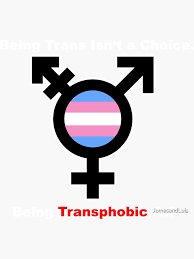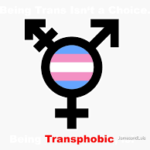Gender dysphoria is a term that has gained increased visibility in recent years, yet many still grapple with understanding its implications and nuances. It’s more than just a feeling; it’s a complex psychological condition that can significantly impact individuals’ lives. This article aims to clarify what gender dysphoria is, explore the insights from the American Psychological Association, discuss symptoms, treatment options, and the importance of support systems. If you or someone you know is navigating this journey, this guide is here to help.
Understanding Gender Dysphoria: The Basics You Need to Know
At its core, gender dysphoria refers to the psychological distress that arises when an individual’s gender identity does not align with their assigned sex at birth. This incongruence can lead to feelings of discomfort, anxiety, and confusion. It’s crucial to understand that experiencing gender dysphoria is not a mental illness but rather a condition acknowledged by various psychological and medical organizations as part of the human experience.Puberty Blockers FertilityTestosterone Pills Side Effects On FemaleForced Feminization Husband
Gender dysphoria can manifest in various ways, varying from person to person. Some individuals may experience intense discomfort with their physical bodies, while others might feel a disconnect with societal gender roles. Understanding that gender identity is diverse and fluid is essential in appreciating the complexities surrounding gender dysphoria.
What the American Psychological Association Says About It
The American Psychological Association (APA) provides a wealth of information on gender dysphoria, emphasizing that it is recognized as a legitimate condition requiring understanding and support. The APA advocates for affirming responses to individuals experiencing gender dysphoria, encouraging mental health professionals to adopt a culturally competent approach tailored to each individual’s needs.
In its guidelines, the APA highlights the importance of validating an individual’s gender identity. The organization also stresses that treatment should not aim to force conformity to gender norms but rather support individuals in exploring and affirming their identities. This perspective is crucial for fostering a more inclusive environment for those navigating gender dysphoria.
Common Signs and Symptoms of Gender Dysphoria Explained
Many people wonder how to identify gender dysphoria in themselves or others. Common signs include a strong desire to be treated as the opposite gender, discomfort with one’s primary and secondary sexual characteristics, and a persistent belief that one has the feelings and reactions typical of another gender. These feelings can manifest at any age, from childhood through adulthood.
In children, signs may include a marked preference for clothes or toys typically associated with the opposite gender, or a strong rejection of their assigned gender’s activities. For adults, symptoms might involve significant distress related to their physical appearance or social interactions. Recognizing these signs is the first step in understanding and supporting someone experiencing gender dysphoria.
Treatment Options: Finding Support That Works for You
When it comes to addressing gender dysphoria, treatment options vary widely and should be personalized. Some individuals may seek medical interventions, such as hormone therapy or surgery, while others might find comfort in social transition, which involves changing one’s name, pronouns, and appearance to align with their gender identity. It’s essential to consult with healthcare professionals who specialize in gender identity issues to determine the best path forward.
Additionally, support from family, friends, and support groups can be instrumental in the healing process. Finding a community where individuals feel accepted and understood can significantly alleviate the distress associated with gender dysphoria. Remember, it’s about finding what works best for you!
The Role of Therapy in Managing Gender Dysphoria
Therapy can be a vital resource for individuals experiencing gender dysphoria. Mental health professionals can provide a safe space to explore feelings, navigate identity issues, and cope with societal pressures. Affirmative therapy, which recognizes and validates an individual’s gender identity, has been shown to be particularly effective in helping clients manage their experiences.
Through therapy, individuals can also develop coping strategies for dealing with challenges such as discrimination, anxiety, and social adjustment. A skilled therapist can help create a tailored plan to address specific concerns, fostering a sense of empowerment and self-acceptance.
Navigating Social and Family Dynamics with Gender Dysphoria
Navigating social and family dynamics can be one of the most challenging aspects of living with gender dysphoria. Individuals may face misunderstandings or rejection from family members, friends, or colleagues. Open communication and education about gender identity can help bridge these gaps and foster understanding.
It’s important to approach these conversations with patience. Some family members may need time to process and adjust to changes. Support resources, such as educational materials or advocacy groups, can provide helpful information to facilitate discussions and create a more supportive environment for everyone involved.
Myths and Misconceptions About Gender Dysphoria Debunked
There are numerous myths surrounding gender dysphoria that can perpetuate stigma and misunderstanding. One common misconception is that gender dysphoria is merely a phase or trend, especially among youth. In reality, it’s a deep-seated experience that can persist over time and requires thoughtful consideration and support.
Another myth is that individuals with gender dysphoria are simply seeking attention or are confused. This dismisses their genuine feelings and experiences. Understanding that gender identity is complex and personal is crucial in dispelling these myths and fostering a more accepting society.
Resources and Support Groups for Gender Dysphoria Help
Finding the right resources and support can make a world of difference for those experiencing gender dysphoria. Organizations like the Human Rights Campaign (HRC) and the National Center for Transgender Equality offer valuable information, advocacy, and resources tailored to the transgender community. These organizations can help individuals navigate their journeys and connect them with supportive networks.
Support groups, both online and in-person, provide a safe space for sharing experiences and advice. Engaging with others who understand the challenges can alleviate feelings of isolation and empower individuals to embrace their identities fully. Remember, you don’t have to navigate this journey alone—support is out there!
Understanding gender dysphoria is a crucial step towards fostering acceptance and support for those experiencing it. The insights shared from the American Psychological Association and various resources can help demystify this complex condition and encourage meaningful conversations. Whether through therapy, supportive communities, or personal exploration, individuals can find pathways to empowerment and healing. If you or someone you know is facing the challenges of gender dysphoria, remember that help and understanding are available, and you are not alone on this journey.


